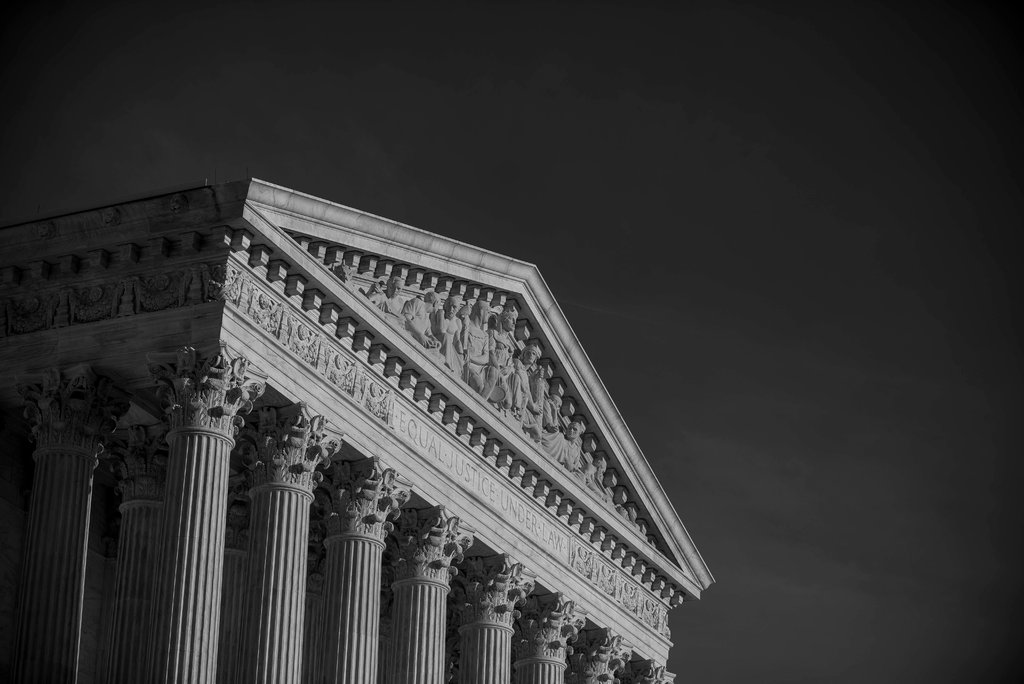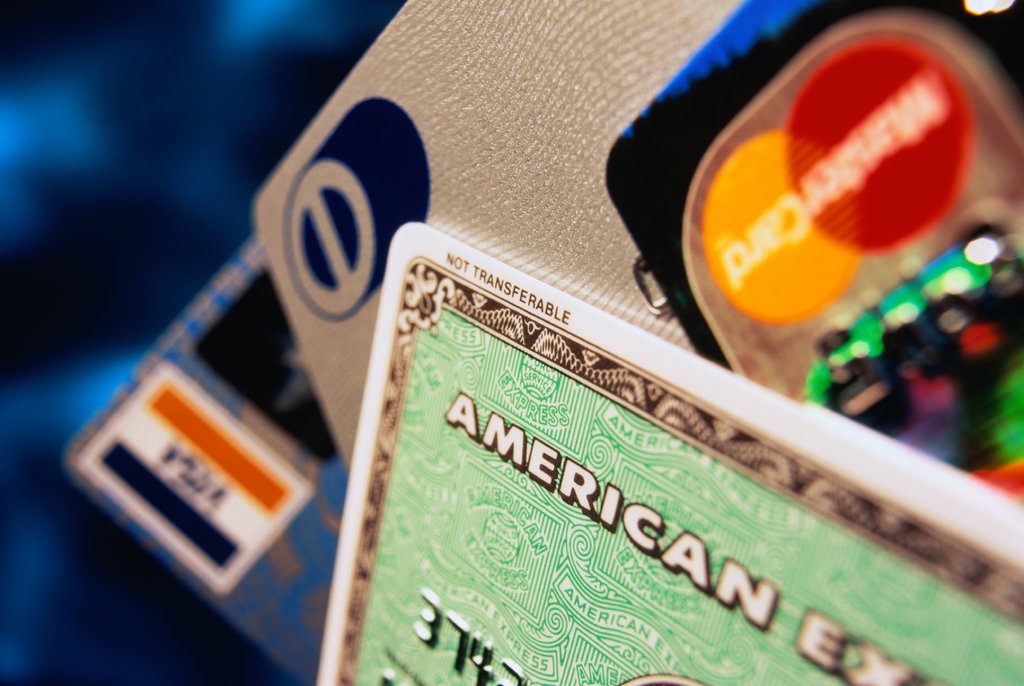New York Times: The Supreme Court Case That Could Give Tech Giants More Power

On Monday the Supreme Court heard Ohio v. American Express. Credit: Gabriella Demczuk for The New York Times
by Lina M. Khan | March 2, 2018
Big tech platforms — Amazon, Facebook, Google — control a large and growing share of our commerce and communications, and the scope and degree of their dominance poses real hazards. A bipartisan consensus has formed around this idea. Senator Elizabeth Warren has charged tech giants with using their heft to “snuff out competition,” and even Senator Ted Cruz — usually a foe of government regulation — recently warned of their “unprecedented” size and power. While the potential tools for redressing the harms vary, a growing chorus is calling for the use of antitrust law.
But the decision in a case currently before the Supreme Court could block off that path, by effectively shielding big tech platforms from serious antitrust scrutiny. On Monday the Court heard Ohio v. American Express, a case centering on a technical but critical question about how to analyze harmful conduct by firms that serve multiple groups of users. Though the case concerns the credit card industry, it could have sweeping ramifications for the way in which antitrust law gets applied generally, especially with regards to the tech giants.
The case was first brought by the Justice Department against American Express, Visa, and Mastercard for imposing anticompetitive restrictions on merchants. The credit card industry is a classic case of oligopoly. Despite involving millions of merchants and hundreds of millions of cardholders, the credit card business is controlled by four firms. Merchants who need payment networks lack any real bargaining power and have been stuck paying high rates to the oligopoly — steeper costs that ultimately get passed on to consumers.

By imposing conditions on retailers that accept Amex cards, retailers were told they could not ask their own customers to use, other credit cards, over an American Express card. Credit: Shaun Egan/The Image Bank, via Getty Images
As one might expect, the credit card companies use their power to block competition. American Express did this by imposing conditions on retailers that accept Amex cards. Retailers were told they could not ask their own customers to use, say, a Discover card, over an American Express card, even if Discover would be a cheaper option. Discover could provide a merchant like The Home Depot better terms than American Express — but, because of American Express’s restrictions, The Home Depot had no way of reflecting Discover’s lower rates to cardholders, thereby keeping Discover’s competitive advantage from translating into greater market share. This meant card networks had no reason to compete when serving merchants, keeping prices high.
The district court ruled that American Express’s “anti-steering” provisions stifled price competition and violated the antitrust laws (Mastercard and Visa settled with the government before trial). But when American Express appealed, the Second Circuit reversed, relying on a new concept to create a special set of rules. The concept is that players in “two-sided” markets are unique because they serve different sets of customers in distinct but related markets, effectively facilitating transactions. American Express, for example, charges both merchants who accept its cards and consumers who use them. Using this concept, the Second Circuit held that the government would have to show that any price increases for merchants also harmed cardholders, or at least didn’t benefit them. In effect, the court introduced a dramatically new rule, making it much more difficult to win important antitrust cases and to stop anticompetitive behavior.
The case is now at the Supreme Court. If affirmed, the Second Circuit decision would create de facto antitrust immunity for the most powerful companies in the economy. Since internet technologies have enabled the growth of platform companies that serve multiple groups of users, firms like Alphabet, Amazon, Apple, Facebook, and Uber are set to be prime beneficiaries of the Second Circuit’s warped analysis. Amazon, for example, could claim status as a two-sided platform because it connects buyers and sellers of goods; Google because it facilitates a market between advertisers and search users. (An industry trade group representing the tech platforms filed an amicus brief in support of American Express.) Indeed, the reason that the tech giants are lining up behind the Second Circuit’s approach is that — if ratified — it would make it vastly more difficult to use antitrust laws against them.
The fact that the tech platforms could effectively be shielded from antitrust is troubling because, in several respects, these firms enjoy dominant market positions that makes antitrust scrutiny of their conduct especially important. By virtue of providing increasingly critical services, tech giants wield immense leverage over the sellers and buyers that rely on their platforms. This power is ripe for abuse. If the Supreme Court ratifies the Second Circuit’s approach, platforms will be able to engage in anticompetitive activity with one set of users, so long as they can plausibly claim that harmful conduct enabled them to benefit another group. Say, for example, that Uber prohibited its drivers from also serving rivals like Lyft, suppressing driver income. Under the current approach, these exclusive agreements would likely violate antitrust law. But under the Second Circuit’s analysis, the case would go nowhere unless plaintiffs could show that this practice also harmed riders.
This danger is compounded by the slipperiness of the concept underlying this analysis: the idea of a “two-sided” market. While reports paid for by the credit card industry introduce “two-sided” markets as a novel concept that requires special analysis, markets serving different groups of users have been around for centuries. They include, for example, grain futures exchanges (connecting farmers and buyers of farm products), banking (linking depositors and borrowers) and newspapers (serving advertisers and readers). For decades, courts have recognized that anticompetitive conduct imposed by a newspaper on readers, for example, is no less illegal if it can be shown to benefit advertisers.
Indeed, almost all markets can be understood as having two sides. Firms ranging from airlines to meatpackers could reasonably argue that they meet the definition of “two-sided,” thereby securing less stringent review.
Oral argument on Monday gave little new insight into how the vote breakdown might fall. Justice Neil Gorsuch pushed an aggressively pro-monopoly line of questions, while Justices Sonia Sotomayor, Stephen Breyer and Elena Kagan were skeptical of arguments offered by American Express. While Chief Justice John Roberts Jr. spoke little, his views may prove decisive. He has criticized unwieldy antitrust standards in the past — a problem that would get much worse if the court rules for American Express.
Unless the Supreme Court rejects the Second Circuit’s approach, it will risk immunizing dominant platforms from effective antitrust review, at the very moment when they most need it.
Lina M. Khan is the director of legal policy at Open Markets Institute, which filed an amicus brief in Ohio V. American Express, and a visiting fellow at Yale Law School.
Follow The New York Times Opinion section on Facebook and Twitter (@NYTopinion), and sign up for the Opinion Today newsletter.